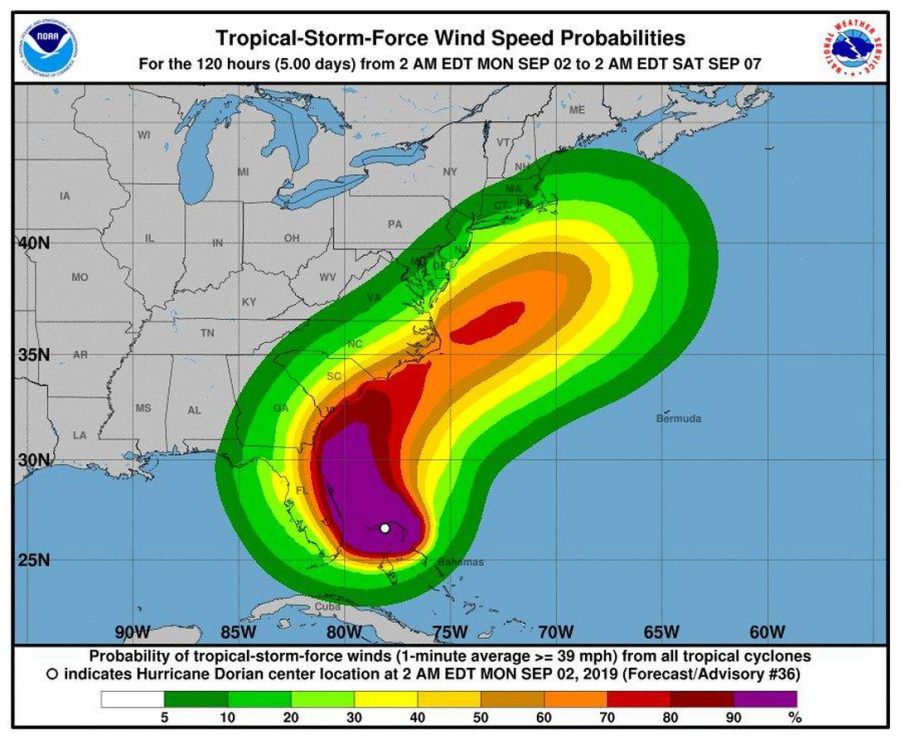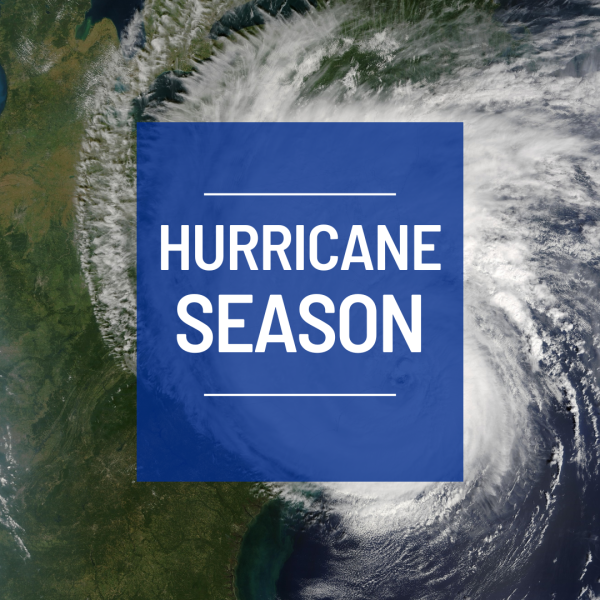Hurricane Dorian: All You Need to Know
As I’m sure most have heard by now, the southeastern United States was struck with a category 5 hurricane in late August 2019.
Hurricane season this year, starting May 20 through November 30 had been pretty calm following previous years but was rudely interrupted by Dorian. The National Climate Assessment states that hurricane activity, intensity, frequency, and duration has increased since the early 1980s, especially in the Northern Atlantic. These changes are due in most part to the warming climate and ocean temperatures.
This devastating event started innocent, as a tropical storm in the central Atlantic Ocean. But it quickly grew into a category 5 hurricane as it paraded toward the Bahamas and U.S. Virgin Islands. According to CBS News, a category 5 hurricane’s damage is when “a high percentage of framed homes will be destroyed, with total roof failure and wall collapse. Fallen trees and power poles will isolate residential areas. Power outages will last for weeks to possibly months. Most of the area will be uninhabitable for weeks or months.” Dorian produced millions of dollars worth of damage and the cleanup will continue for many months to years in the future.
The Direct Relief Organization says that “Through formal agreements with the Caribbean Disaster Emergency Management Agency, the Organization of Eastern Caribbean States, the Pan American Health Organization, and dozens of NGO and government entities, including in the Bahamas, Direct Relief has been able to deploy emergency resources rapidly.” Trump is also sending federal aide to the Bahamas to help clean up and treat those who are stranded or hurt. This event will take lots of time, money, and hard work to clean up.
Dorian made landfall in the Bahamas on September 1, leaving a wake of destruction, before moving on to his next victim. Eastern Florida was struck by this hurricane on September 2 damaging many cities and moving north along the east coast of the US up to Canada. Wind speeds peaked at 195mph.
The death toll on this hurricane is 50 but numbers are continuing to rise as thousands of Bahamians were left stranded and hundreds of neighborhoods were brutally destroyed.

Favorite Quote: "Sometimes I start a sentence and I don't even know where it's going. I just hope I find it along the way." The Office, Season 5
Favorite Food: Bagels
Fun Fact: Colorado is my favorite state.







